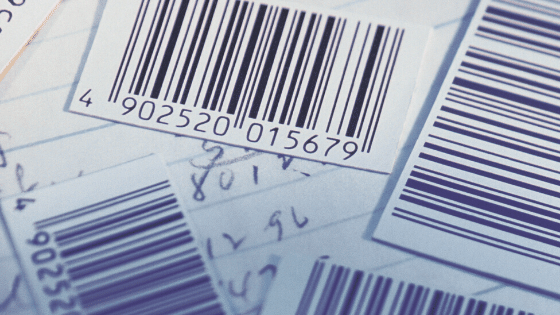Inventory SKUs (pronounced “skew”) stand for Stock Keeping Units and are used by retailers to both identify inventory and keep track of inventory movement or changes in product stock levels over time.
It is basically a unique combination of numbers and letters assigned to each product in a retail store. As a retail owner, inventory SKUs give all of your products a single type of code to help you keep track of certain details for a specific product including price, product information (colour, size, features, etc.), quantity, and manufacturer. SKUs are often associated with vendors or supplier barcodes but can they can also be converted into scannable barcodes and printed on to product labels.
A retail POS system is the software that holds all of this inventory information so that you can track what you’re buying, how much stock you’re carrying and whether stock movement matches what you’ve sold. Whenever you’re looking for a new retail POS system make sure to check if the software will allow you to use your existing SKUs and also generate consecutive SKUs for new products. This is particularly important if you integrate to other non-POS systems (e.g. accounting systems) based on your SKU names.
SKUs vs GTINs
SKUs should not be mistaken for Global Trade Item Numbers (GTINs) or Universal Product Codes (or UPCs). SKUs are internal codes used for products that are unique to a retail business. On the other hand, GTINs or UPCs are the same for a product – no matter who/what store sells it.

How Are SKUs Made?
Each retail store has a unique and specific process in place for choosing SKUs. This method is usually easy to understand and follow for retail staff.
POS systems can help you create SKU codes based on a format that works for your business. For example, your SKU code can have a specific prefix or suffix together with a number that increases consecutively. For example, a SKU for your business might be FD-2340-GR. Others use shortcodes within their SKUs as an easy hint to staff so they don’t need to memorize numbers.

How Are SKUs Used?
Inventory management: Inventory/stock-takes should be done at regular intervals in retail; both for tax purposes and to ensure accurate inventory levels.
When each product is assigned a unique SKU, inventory availability is easier to determine throughout the year. And when it comes time for a stock-take, SKUs make it easier to reconcile stock levels – so that actual inventory levels match inventory counts in your retail POS or inventory management system.

Re-Stocking Products
Making use of SKUs can help store owners identify reorder points and a minimum threshold – so when inventory hits a certain level, they are made aware that a new purchase order needs to be placed.
These internal codes also help you identify the products that move faster. Meaning you only have to re-order when you really need to – resulting in reduced inventory holding costs.

Better Customer Experience
Have you ever walked into a store and seen a pair of shoes or a t-shirt that you liked – but it turned out that you needed a different size? In this case, retail employees usually scan the item’s barcode or label to see if they have your size in stock, either in the back stockroom or at a different location.
This instance explains how SKUs are used within a retail system to improve customer experience. When products share a traceable type of code, you and your staff can more easily identify stock levels quickly so that more time is available to actually assist customers.

Easier To Identify Profitable Products
SKUs are generally the easiest way for retailers to filter for specific and detailed product reporting – e.g. identifying bestsellers and underperforming products by their SKU. When you combine this with merchandising and product categories or tags, business owners can more easily see the effectiveness of their store’s product mix or product lines.

Identify Inventory Shrinkage
Inventory shrinkage in retail can be defined as the difference that exists between the inventory quantity in a retailer’s POS system and the actual inventory in that store. In other words, it consists of the stock/product/inventory that goes missing due to human error, theft, damage, miscounting, etc.
Inventory management is key to minimizing shrinkage in retail. As stated in an inventory shrinkage article published by Forbes, “Without an active inventory process, you do not realize your losses until it is too late.”
And properly designed and implemented inventory SKUs are central to any good retail management system. They are key to modern retail operations since they are necessary to share and track inventory information between different locations, systems, and sales channels.

Did you find this article helpful? We will be posting more inventory management tips in the upcoming weeks.
Subscribe to our blog to stay updated.

#SKUdefination #whatareSKUS #inventorymanagement #retailPOS #cloudPOS #pointofsale #builtforretail


